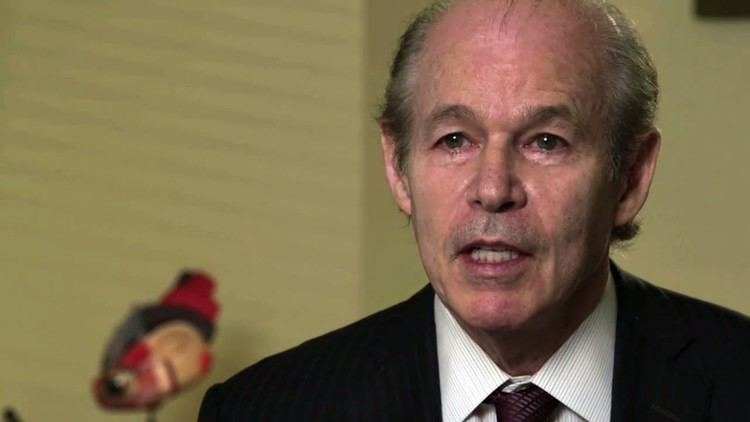Website www.jarvikheart.com | Name Robert Jarvik Role Scientist | |
 | ||
Full Name Robert Koffler Jarvik Alma mater Syracuse UniversityNew York University Education | ||
Robert jarvik and the artificial heart
Robert Koffler Jarvik (born May 11, 1946) is an American scientist, researcher, and entrepreneur known for his role in developing the Jarvik-7 artificial heart.
Contents
- Robert jarvik and the artificial heart
- Robert Jarvik MD 2016 Arents Award Recipient for Excellence in Medical Science
- Early life
- Career
- Personal life
- References
Robert Jarvik, M.D., 2016 Arents Award Recipient for Excellence in Medical Science
Early life
Robert Jarvik was born in Midland, Michigan, to Norman Eugene Jarvik and Edythe Koffler Jarvik, and raised in Stamford, Connecticut. He is the nephew of Murray Jarvik, a pharmacologist who was the co-inventor of the nicotine patch.
Jarvik is a graduate of Syracuse University. He earned a master's degree in medical engineering from New York University.
Career
After being admitted to the University of Utah School of Medicine, Jarvik completed two years of study, and in 1971 was hired by Willem Johan Kolff, a Dutch-born physician-inventor at the University of Utah, who produced the first dialysis machine, and who was working on other artificial organs, including a heart. Jarvik received his M.D. in 1976 from the University of Utah. A medical scientist, he did not complete an internship or residency and has never been licensed to practice medicine.
Jarvik joined University of Utah's artificial organs program in 1971, then headed by Willem Johan Kolff, his mentor. At the time, the program used a pneumatic artificial heart design by Clifford Kwan-Gett that had sustained an animal in the lab for 10 days. Kolff assigned Jarvik to design a new heart that would overcome the problems of the Kwan-Gett heart, eventually culminating with the Jarvik-7 device.
Jarvik worked jointly with Kolff on the Jarvik-7 artificial heart, a self-contained, integrated pneumatic unit based on previous designs, particularly those of Paul Winchell. No better solution was found for transcutaneous transmission of energy than surgical tunnelling of two 3 cm pneumatic tubes. The control apparatus was shopping-cart sized. Thus, a patient with a Jarvik-7 had very restricted mobility, even if other problems such as embolism and infection were adequately controlled. Patients still required medication, including heavy antibiotics as well as other drugs and treatments. The heart utilized ultra thin membranes stacked to form a diaphragmatic surface with a graphite lubricant intermittently placed between the membranes.
Jarvik's name came to the forefront after the well-aired 1982 news coverage of the artificial heart implant (the first done since Domingo Liotta and Denton Cooley's first in 1969). William DeVries first implanted the Jarvik-7 into retired dentist Barney Clark at the University of Utah on December 2, 1982. He required frequent visits to the hospital for the next 112 days, after which he died. During frequent press conferences to update the patient's condition, Jarvik, along with DeVries, briefed the world’s media on Clark’s condition. The next several implantations of the Jarvik-7 heart were conducted by Humana, a large health care insurance company. The second patient, William J. Schroeder, survived 620 days.
Later, Jarvik formed Symbion, Inc. to manufacture the heart, but he lost the company in a takeover. Jarvik then founded JARVIK Heart, Inc., and began work to create the Jarvik 2000, a lifetime ventricular assist device.
In 2006, Jarvik began appearing in television commercials for Pfizer's cholesterol medication Lipitor. Two members of Congress, as part of their campaign against celebrity endorsements, began an investigation as to whether his television advertisements constitute medical advice given without a license to practice medicine. One controversial ad depicts Jarvik rowing, but due to insurance and other considerations, he did not row himself, and a body double was used. Later, Jarvik admitted he had not taken Lipitor until becoming a spokesman for the company. On February 25, 2008, Pfizer announced that it would discontinue its ads with Jarvik.
Personal life
Jarvik is married to Parade magazine columnist Marilyn vos Savant since August 23, 1987. Contrary to some sources, Jarvik is not a Latter-day Saint.
